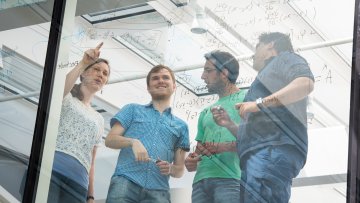14:00
Introduction to Social Choice Theory
Abstract
Do you feel unable to explain why maths are cool? Are you looking for fun and affordable theorems for your non-mathematician friends? This is your topic.
This talk aims to be a rigorous introduction to Social Choice Theory, a sub-branch of Game Theory with natural applications to economics, sociology and politics that tries to understand how to determine, based on the personal opinions of all individuals, the collective opinion of society. The goal is to prove the three famous and pessimistic impossibility theorems: Arrow's theorem, Gibbard's theorem and Balinski-Young's theorem. Our blunt conclusion will be that, unfortunately, there are no ideally fair social choice systems. Is there any hope yet?


